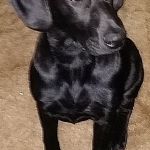Advertisement
Not a member of Pastebin yet?
Sign Up,
it unlocks many cool features!
- Paper is for submission only and internal discussion only. Paper has
- been placed on embargoed status pending internal peer review. Please do
- not distribute until released by committee.
- Volucris Niger Semaj Llewdlac Cranial University
- * Kingdom Animalia
- * Phylum Chordata
- Subphylum Vertibrata
- * Class Aves
- * Order Trochiliformes
- * Family Trochilidae
- Subfamily Trochilinae
- * Genus Volucris (Llewdlac, 2004)
- * Species Volucris Niger (Llewdlac, 2004)
- Description: A flying creature reported by various eyewitnesses. The
- characteristics of this flying creatures are:
- Rotary Wing, oval or egg shaped body, always appears a uniform black in
- color with no markings and is accompanied by a loud mechanical or
- roaring sound.
- Size varies but if eyewitness reports are correct this is the largest
- avian known to exist in the world that can hover.
- Native to: North America with sporadic sightings in other countries.
- Known Habitat: The habitat of Volucris Niger is varied. Eyewitnesses
- have reported it's appearance worldwide but the most sightings have been
- in North America. The highest percentage of sightings has been at
- transitory locations where firearms are sold, where religious activities
- are present and where reports of unidentified or experimental aircraft
- have been reported. There is no apparent reason for the wealth of
- sightings at these locations other than a higher than usual interest in
- the Volucris Niger on the part of the participants at these locations.
- Mating: Volucris Niger according to eyewitness accounts is a solitary
- creature when appearing in non-secluded locations. Mating rituals are
- unknown.
- Young: There have been several sightings of unusual variations of the
- Volucris, both in color and size. Since it is known that several species
- young exhibit different coloring than the parent it has been postulated
- that these are offspring.
- Sightings of young have occurred at the following locations.
- American Eurocopter, Bell Helicopter, Boeing Rotorcraft, Brantly
- International, Enstrom, Rotorway International, Schweizer Aircraft
- Corporation, Sikorsky Aircraft.
- A previously unknown variation, the Volucris Niger Pusillus has been
- sited at Ultrasport.
- Reproduction: An unconfirmed report that the Volucris performs
- fertilization of eggs while in flight has been presented. In this report
- the Volucris was observed expelling what the observer considered an
- ejaculate. What was unusual in this report is that the ejaculate was
- almost always expelled into fixed structures or vehicles of a specific
- shape and color. The ejaculate was observed to be highly unstable and
- damage to the area of ejaculate impact was severe. It is unknown what
- purpose this serves the reproduction of the Volucris but researchers are
- continuing their studies.
- A counter theory has been argued that this is not a method of
- reproduction but a method of protecting it's territory from predators.
- It is assumed that fixed structures and vehicles of a certain shape and
- color trigger an instinctive protective response. It is possible that
- the Volucris is initiating an instinctive response based on the
- characteristics of a now extinct predator species.
- Trademarks mentioned are the property of their owners. (c) MrMeval
Advertisement
Add Comment
Please, Sign In to add comment
Advertisement

